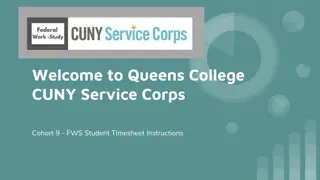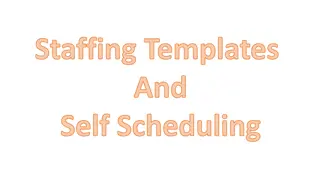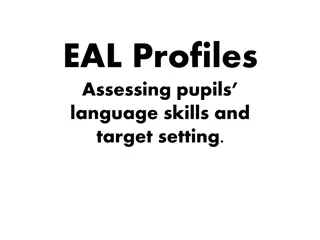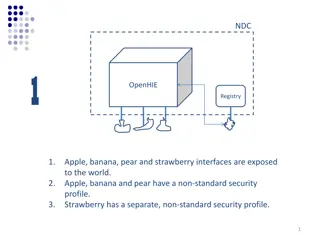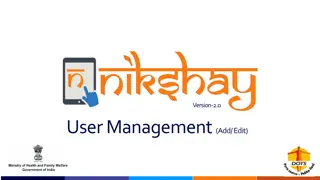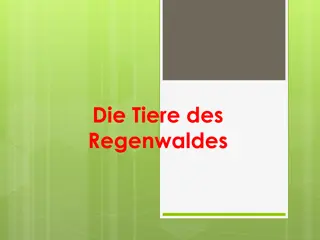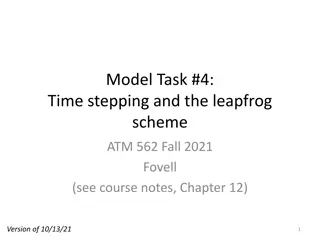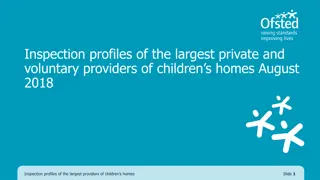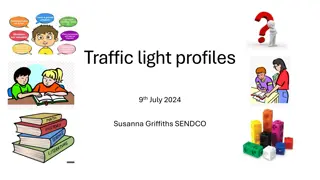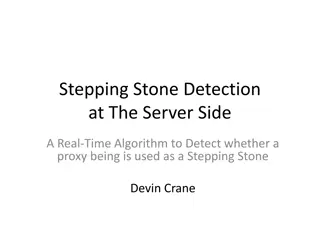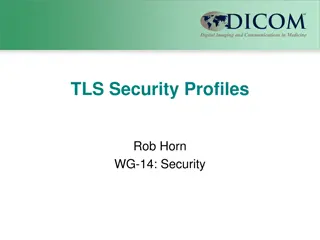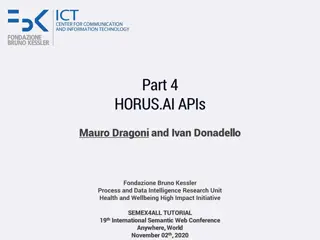We Sent It! Stepping Through Time Team and Insights Profiles
Explore the journey of the "We Sent It! Stepping Through Time Team 2" featuring members Rachel Clinton, Jamie Ullman, Michelle Vinocour, and Pannisy Zhao. Gain insights into the team members, problem domain, and interviewees like Colin, Lucy, Emi, and Tiki. Dive into the preferences, personalities, and perspectives of these individuals as they navigate busy schedules, social connections, and new experiences.
Download Presentation

Please find below an Image/Link to download the presentation.
The content on the website is provided AS IS for your information and personal use only. It may not be sold, licensed, or shared on other websites without obtaining consent from the author.If you encounter any issues during the download, it is possible that the publisher has removed the file from their server.
You are allowed to download the files provided on this website for personal or commercial use, subject to the condition that they are used lawfully. All files are the property of their respective owners.
The content on the website is provided AS IS for your information and personal use only. It may not be sold, licensed, or shared on other websites without obtaining consent from the author.
E N D
Presentation Transcript
We Sent It! Stepping through Time Team 2 Stepping through Time Team 2 Rachel Clinton, Jamie Ullman, Michelle Vinocour, Pannisy Zhao
Team Members photo photo photo photo Rachel Clinton Rachel Clinton Junior Computer Science Jamie Ullman Jamie Ullman Junior Computer Science Michelle Vinocour Michelle Vinocour Junior Symbolic Systems Pannisy Zhao Pannisy Zhao Junior Symbolic Systems
We narrowed down our problem domain Sending it! Sending it! (Gen- Z and Millennials)
About the Interviewees photo photo photo photo Colin Colin Lucy Lucy Emi Emi Tiki Tiki 28 years old Assistant Director of Wellbeing Stanford, CA 24 years old 16 years old High school student San Francisco, CA 24 years old Private Equity Analyst San Francisco, CA Software Engineer at Uber San Francisco, CA
Tiki - Insights Oh, definitely at least a week in advance. If someone wants to hang out, I need to know ahead of time. I m a busy girl. I don t have time to do anything random or crazy. Tiki People struggle to make spontaneous or more adventurous plans when operating on busy schedules. Tension Tension: Although she values staying close to friends, she is often too tired to plan new things. 24 years old Private Equity Analyst San Francisco, CA
Colin - Insights I love when someone s like you would like this because not only are they giving me something that I would like, but they they are telling me that they know about me. When it s somebody you know and care about, you know what their send is. Colin 28 years old Assistant Director of Wellbeing Stanford, CA He much prefers a friend directly recommending a send to him over him seeing it on their social media. Surprise: Surprise: The more he knows and trusts somebody, the more likely he is to be inspired by the activities they do. Extreme User
Emi - Insights My friend group and I sometimes try out new places, but I tend to stick to the places I have tried out before for people I don t know as well Last Friday, I had to split the ticket to a club with my mom: she paid $90, I paid $30. I didn t want to be left out. Emi 16 years old High school student Palo Alto, CA Surprise Surprise: She usually goes to new places and tries out new plans with their closest friends, but is scared to take risks with others. She wishes plans with her friends were more affordable; she had to split a ticket to a club with her mom because it was $120. But EVERYONE was going.
Lucy - Insights I d say the biggest challenge right now in making plans with friends is everyone s busy schedules. In undergrad it was a lot easier because all of my friends were on campus, but here in SF it is harder Lucy 24 years old It can be hard for people in new cities to connect with their friends because of the coordination that is required to make plans with multiple busy schedules. Tension Tension: Finding a balance between social time and solo time is difficult for Lucy. Software Engineer at Uber San Francisco, CA
Revised POVs and HMWs Game Changing Selected HMW
POV 1 photo It would be game It would be game- -changing way that allows for more spontaneity. changing for Lucy to easily make plans with friends in a Lucy Lucy 24 years old Software Engineer at Uber San Francisco, CA HMW make people excited about being spontaneous? HMW make people excited about being spontaneous?
POV 2 photo Tiki Tiki friends have never done before in the city. 24 years old Private equity analyst San Francisco, CA It would be game It would be game- -changing if plan new things to do in their city. changing if she and her friends could easily find and HMW make new plans exciting rather than stressful? HMW make new plans exciting rather than stressful?
POV 3 photo the Alex Alex (from A1) (from A1) 18 years old Santa Clara University Freshman Santa Clara, CA It would be game It would be game- -changing to experiences without needing to detract from those experiences while they are happening. changing to help Alex be able to relive his positive HMW help people document the moment without taking them out of HMW help people document the moment without taking them out of the moment? the moment?
Brainstorming & Heat Map Voting HMW #1 HMW #1 HMW #3 HMW #3 HMW #2 HMW #2
Solution 1: An app that offers people rewards or discounts when they do something fun and spontaneous.
Prototype: Assumptions, Participants, Constraints Assumption People are more likely to do something fun spontaneously if there is a reward system in place. 1 Participants Stanford students, specifically those who are currently studying or working and have not taken a mental break not taken a mental break in a while. 2 Constraints Experiment done on college campus, where students may be more likely than a young professional in a workplace to want to interrupt their work to do something fun. 3
Prototype 1 - Rewarding Spontaneity For this experience prototype, we found people who were studying or working and offered them treats for doing spontaneous them treats for doing spontaneous activities activities. We wanted to choose activities that would provide some benefit benefit to them, or encourage encouragethem to do something they have been wanting to do. offered Example: texting a crush to get dinner Example: playing catch
Prototype 1 - Rewarding Spontaneity Things that worked Things that worked Out of the four people asked to do tasks, three of them completed them. All reported feeling happy emotions after doing the task, even if they were on-the-fence about it beforehand. Things that didn t work Things that didn t work Some people did not see the benefit of completing a spontaneous task, especially one that interrupted their studying. Surprises Surprises People really enjoy incentives. A small incentive of a donut was enough to encourage people to do things out of their comfort zone, like texting a crush! New Learnings New Learnings Different incentives can encourage people to do spontaenous activities and, while they may not understand the benefit of the activity at first, they will likely enjoy it once they have completed it.
Solution 2: An app that limits the number of photos you take during an activity / event to encourage people to live more in the present.
Prototype: Assumptions, Participants, Constraints Assumption People are more present and will enjoy the experience more if they are not constantly capturing a moment through their phone 1 Participants 3 gen-z people at an in-person Lake Street Dive concert. Anna (recent alumn), Betty (sophmore), Calvin (coterm) 2 Constraints We were only able to have 1 control, and 1 of each of 2 experimental setups. 3
Prototype 2 - Photos and Being Present Control Obstruct Screen Limit (3x)
Prototype 2 - Photos and Being Present Things that worked Things that worked Setting the limit of 3 times did influence Anna to take out her phone less. She only took 1 photo. The sticky note also reduced the number of photos taken of the band. Betty usually takes 2. This time she took none. Calvin (control) took photos/videos 7 times. Things that didn t work Things that didn t work Betty found it frustrating to have the sticky note placed on the phone while trying to take photos. Surprises Surprises A large part of the frustration with the sticky note was that it blocked Betty from being able to read her texts when the phone buzzed. The average age of the crowd was higher, so not many people had phones out. Anna said that this environment impacted their phone usage as well. New Learnings New Learnings A reminder/goal to stay present is relatively more enjoyable than an enforced barrier, such as a sticky note. However, neither Anna nor Betty found that they benefited.
Solution 3: An app that offers friends customized plans based on their shared interests
Prototype: Assumptions, Participants, Constraints Assumptions People resort to familiar plans because they are hesitant to suggest a plan that the group won t enjoy. If they are given a more creative activity that meshes their interests, they would do it. 1 Participants Four FourCosta Rican university students who hang out every week while doing variations of the same plan (going out for dinner). 2 Constraints Because of the time, we weren t able to test they actually carried out the plan. We also didn t get as much insight into their interests through a Google form. 3
Customizing based on shared interests That s so exciting! We mentioned that the other day but we forgot about it!
What we learned from the experience prototype Things that worked Things that worked We spread joy by suggesting and facilitating a fun plan (decorating cookies instead of going to brunch). Things that didn t work Things that didn t work Our algorithm was clunky and generalized; if we knew they liked watching movies, I we had no idea what genre. If they said they enjoyed nature, it wasn t clear what part of nature. Surprises Surprises They had already discussed the idea we suggested a while ago, but never went through with it What does this tell us about the way we can encourage behavior through the app? New Learnings New Learnings We should combine this solution with rewards to encourage people to actually send it!
Final Prototype We learned We learned Experience Prototype Experience Prototype 1 1: People are more likely to do something spontaneous if they are given a reward. Final Solution Final Solution: A gamified app that rewards going through with spontaneous, fun plans (going on a hike, decorating cookies, etc.), which we suggest facilitate based on individual interests rewardspeople for spontaneous, fun we suggest and individual interests. Experience Prototype Experience Prototype 3 3: We spread joy by making planning exciting, and suggesting a plan that everyone is interested in. ( ) Experience Prototype 2 Experience Prototype 2
Ethical Implications Rewarding Risk Rewarding people for spontaneous behavior and less thought-out plans may result in risky activities. 1 Distracting People Encouraging people to spontaneously distract themselves from their current work or studies could upset them or stress them out. 2 Selection of users While this app will serve social young people, who already see their friends on a weekly basis, we may be leaving out older people who may be more in need of social connection. 3
Thank you! Questions?
Appendix Videos from Experience Prototype 1: - - - Sydney (after experience of texting crush) Jeff (before and after experience of playing catch) Christian (after experience of going on a walk) Lucy Stewart Interview Notes Consent forms POV Brainstorm Note: See speaker notes for more information as well.





